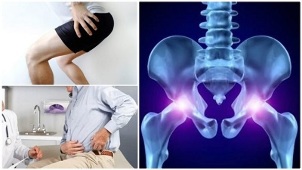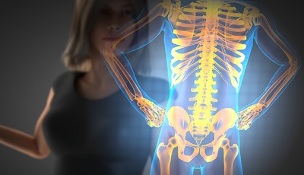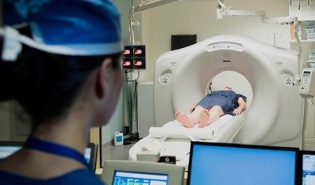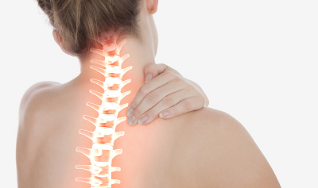Osteochondrosis or chondrosis is a disease that reduces the elasticity of cartilage tissue in the joints. The disease can manifest itself in any joint, and depending on the location it has its own classification. The progression of the disease leads to impaired motor function of the joint, often complete immobility occurs.
Symptoms of osteochondrosis, its causes, and methods of treating this disease are discussed in the information provided.
How osteochondrosis manifests itself
The signs of osteochondrosis appear gradually, first with a mild pain syndrome, which then becomes chronic and intense. Usually, patients go to the doctor with complaints of severe pain and inability to perform certain movements.
In order for the treatment of osteochondrosis to be as effective as possible, the disease must be diagnosed at an early stage.
The following signs may indicate the development of osteochondrosis:

- Pain when moving;
- Joint crunch;
- Stiffness of movement;
- Muscle spasm;
- Headache, spikes in blood pressure and dizziness (with cervical osteochondrosis);
- Pain in the chest and between the shoulder blades (thoracic osteochondrosis);
- Pain in the hip and buttocks (lumbosacral osteochondrosis and hip joint);
- Numbness of the limbs;
- bone pain;
- Increases sensitivity to weather conditions;
- Decreased visual acuity.
The first manifestations of the disease usually go unnoticed. That is why the initial stage of osteochondrosis is rarely diagnosed and, as a rule, completely by accident.
Causes of osteochondrosis
Osteochondrosis does not occur spontaneously. Degenerative processes in the joint lead to its development, namely: disruption of normal blood circulation and mineral metabolism, formation of ossified formations - osteophytes. All this leads to reduced mobility of the joint, changes in its structure and the appearance of uncomfortable sensations when moving and walking.
The main reasons for the appearance are:
- Lack of constant physical activity;
- Injuries and injuries to the joint;
- Deformation of the joint under excessive stress;
- Disorders of nutrition and blood supply to the joint;
- overweight problems;
- Unbalanced diet;
- Chronic stress;
- Hereditary predisposition;
- Endocrine pathologies;
- Age related changes;
- Unfavorable working conditions (prolonged stay in an awkward position, hypothermia, lifting weights).
The chances of developing the disease increase in patients who have flat feet, congenital or acquired developmental pathologies of the foot. With such ailments, the load during walking is poorly distributed, which leads to a change in normal gait and, as a result, deformation of the joints of the spine, knee and hip.
The occurrence of osteochondrosis of the spine directly depends on already diagnosed diseases of the musculoskeletal system, for example, scoliosis.
In addition, chronic diseases of internal organs can also act as a provoking factor. Infections and inflammation can affect nearby tissues, which leads to the formation of pathology in the joint joints.
Classification of osteochondrosis

In medical terminology, the definition of "spinal chondrosis" can often be found. It means the initial stage of osteochondrosis, affecting one of the departments (or more) of the spine. The pathology develops in the intervertebral disc and does not affect nearby tissues. This is the peculiar insidiousness of chondrosis of the back, since the asymptomatic onset does not give the opportunity to start treatment in time and overcome the disease.
Usually, chondrosis, the symptoms of which have not yet appeared, is discovered quite by accident, during a full body examination.
In addition, depending on the location of the pathology, we can also speak of coxarthrosis - osteochondrosis of the hip joint. The pathology can also affect the accumulated shoulder or joint. Osteochondrosis of the back, on the other hand, is also classified according to the site of localization.
What are the types of osteochondrosis of the back:
- Cervical osteochondrosismanifests as pain and stiffness in the neck, back of the head, and between the shoulder blades. It is often considered an occupational disease for accountants, computer programmers, and other professions that involve prolonged sitting.
- Osteochondrosis of the thoracic regionis quite rare. Due to the relative immobility of this area, symptoms are often mistaken for angina or intercostal neuralgia. In addition, manifestations of thoracic osteochondrosis can resemble an attack of pancreatitis or gastritis. L '
- Lumbar or lumbosacral osteochondrosisis the most common type of disease. This is due to the increased stress on this department, even during normal movements. With increasing load, lifting weights, playing sports, the pressure on the vertebrae of the lumbar spine increases several times, which can trigger the development of the disease. The manifestations of lumbar osteochondrosis are extremely diverse. The main symptoms include not only pain when bending, rotating and other movements, but also muscle wasting, difficulty in walking, reduced sexual function and diseases of the urinary system.
- Osteochondrosis of the coccyxis a rare disease that mainly affects women. This is directly related to the physiological characteristics of the structure of the small pelvis. It is determined by the pain syndrome when sitting, walking and doing physical exercises. The onset is usually preceded by injuries and falls, as well as a prolonged stay in an uncomfortable sitting position.
- Polysegmental osteochondrosisis diagnosed when degenerative lesions of neighboring joints are detected. They can be located in one or more parts of the spine.
- Generalized osteochondrosismanifests as damage to two or more parts of the spine. It is a difficult disease to treat with a low chance of a complete cure.
- Diffuse osteochondrosisis diagnosed if the condition spreads to all segments of the spine.

A progressive disease is not only characterized by pain and discomfort when moving. Inflammation of the connective tissue of the joint develops, the intervertebral roots are pinched, and growths of bone tissue - osteophytes - begin to form on the vertebrae.
Stages in the development of osteochondrosis
To determine the tactics of healing osteochondrosis, it is necessary not only to accurately diagnose, but also to determine the degree of involvement of joint elements in the pathological process. For this, it is customary to use a classification according to the degrees, as well as the localization of the pathology.
What are the types of osteochondrosis:
- The initial stagedoes not manifest as a pain syndrome and does not require specific treatment. According to statistics, the first degree of osteochondrosis is present in more than 80% of the population over the age of 50. Recently, due to the spread of professions that require a permanent stay in a sitting position, as well as a decrease in the physical activity of children and adolescents, osteochondrosis is diagnosed in almost one in two people under the age of 30. years.
- Second-stage osteochondrosisis diagnosed by x-ray examination. The image shows the formation of multiple intervertebral disc fractures, but the fibrous ring remains intact. The manifestations of the disease are insignificant, usually there is discomfort with a prolonged stay in a sitting or standing position, after a short rest the pain goes away on its own. The second diagnosed stage of osteochondrosis can be treated with great success with conservative methods.
- The third stageof osteochondrosis is characterized by numerous lesions of the intervertebral disc, as well as possible rupture of the fibrous ring. The pain becomes prolonged and constant, and may even appear when at rest. Treatment of osteochondrosis in the third stage is carried out by conservative and surgical methods, the prognosis depends on the severity of the pathology and the timely treatment of medical help.
- The fourth stageosteochondrosis is the most severe. It is determined by severe damage to the joint structure. Ligaments, vessels, nerve endings and connective tissue of the joint are involved in the pathological process. Conservative methods are generally ineffective. Surgery is used more often, but even an operation does not guarantee recovery, patients often lose joint mobility and remain disabled.

In order to avoid the passage of osteochondrosis to the critical stage, it is imperative to pay attention in time to the signals that the body is giving us. There are cases when patients suffer from pain and discomfort for years, and also adjust to the limitation of motor function, but do not seek medical help.
It should be noted that osteochondrosis is not a disease that can be cured on its own at home using traditional methods or only pain relievers.
A mandatory comprehensive approach is required, which is determined by the peculiarities of the development of pathology, the causes of its occurrence, as well as the individual indicators of the patient.
Diagnosis of osteochondrosis
To ensure the correct tactics of treatment of osteochondrosis, it is necessary to undergo special studies. They will help identify the location and the causes that led to this disease. Only after eliminating all the negative factors affecting the progression of the disease can you start the main treatment.
How the degree and localization of the pathological process is determined:

- X-ray examination.For reliable information, it is necessary to take pictures in several projections. The location and degree of joint damage, the presence of osteophytes and the condition of the bone canals are determined. Doppler ultrasound
- .Check for disturbances in blood supply, vascular integrity and speed of blood flow.
- Myelography.Special examination of the spine using a contrast medium. Used to identify intervertebral hernias and their location.
- Computed tomography.The condition of the intervertebral discs, possible deviations in the structure and deformation, pinching of nerve roots and changes in the structure of individual vertebrae are checked.
- Magnetic resonance imaging.Usually provides a more detailed examination of the structure of the articular joints. It is awarded, as a rule, when the informative content of other examinations carried out is weak. An undoubted advantage is a more detailed study of the condition of soft tissues.
The patient's history is also studied without fail. Possible injuries, suffered even long before going to the doctor, operations and chronic diseases can also provoke the development of pathological processes in the joint tissues.
In addition, a personal examination and questioning of the patient is carried out. Based on the information received, the diagnosis and degree of joint damage is determined.
How to treat osteochondrosis
After diagnosis and identification of the causes of osteochondrosis, the specialist draws up an individual treatment plan. It necessarily takes into account the physical indicators of the patient, the peculiarities of the development of pathology and its localization.

An integrated approach is used for processing.
It is impossible to do with drugs on their own, since it is necessary to simultaneously develop joint mobility, eliminate a possible inflammatory process in the surrounding tissues, and also neutralize the negative factor that led to the development of the disease.
That is why it is better to entrust the treatment of chondrosis to a specialist who will select an individual set of exercises, and also take into account the dynamics of therapy.
Drug treatment for osteochondrosis
The prescription of drugs depends on the type of lesion and the associated pathological processes in the tissues. As a rule, patients try to treat osteochondrosis on their own, with pharmaceutical and self-made ointments and compresses, as well as folk remedies.
Unfortunately, this only provides temporary relief and does not help to eliminate ailments completely. To effectively treat osteochondrosis, the following groups of drugs are used.
Pharmacotherapy includes:
- Systemic and local anesthetics.These include ointments and compresses, as well as pills and injections for severe pain. Used to treat osteochondrosis during an exacerbation.
- NSAIDs- nonsteroidal anti-inflammatory drugs are used not only to relieve pain and inflammation in the affected area, but also when the temperature is caused by the disease.
- The action of muscle relaxantsis aimed at relieving muscle tone. The drugs in this group are taken as a course of 30 to 45 days and the dosage is strictly individual. Usually, they begin to take minimum doses (in severe hypertonia, injections are prescribed), which are gradually increased. In order not to cause a withdrawal syndrome, the dosage is then gradually reduced.
- chondroprotectorshelp restore cartilage tissue by compensating damaged areas. The effect of this group of drugs does not appear immediately, which is why a course of several months is prescribed. There are different forms of medication. During an exacerbation, it is used in the form of injections, then treatment is continued with tablets or capsules.
- Angioprotectorsare used in the event of identified pathologies of the blood supply. They help strengthen the walls of blood vessels, promote relaxation and restore metabolism. The duration of admission is also several months.
- Glucocorticosteroidsare prescribed to improve the function of NSAIDs and muscle relaxants. They have a pronounced anti-inflammatory and decongestant effect, help with pain and spasms. The course of treatment is determined individually. In the first days of an exacerbation of the disease, they are used as an injection, then in the form of tablets. The dosage is gradually reduced until the drug is completely stopped.
- Biogenic stimulants.They accelerate the metabolism and promote the restoration of joint tissues. Self-treatment of chondrosis at home with such drugs is impossible, but in complex therapy they have proven effective.
- Complex vitamin preparations.Promotes general strengthening of the body and speeds up metabolic reactions.

Is osteochondrosis treated only with medication? Of course not. To completely get rid of the disease, it is necessary to perform other medical procedures. Particular attention should be paid to a special set of exercises. It is developed for each section of the spine or joint joints of the limbs.
Important point:classes are carried out under the supervision of a specialist, and only after removing the inflammation in the affected area.
Catching up gymnastics
What to do in case of osteochondrosis and which movements it is better to refuse, a special trainer with the appropriate qualifications will tell you. At first, the exercises are performed under his control, and then the patient can continue to exercise on his own.
Home treatment for osteochondrosis involves regular physical activity to restore mobility to the joint.
Massage and physiotherapy
Several alternative medicine methods are also used in the treatment of osteochondrosis of the spine. These include mud wraps, acupuncture, magnetotherapy, manual therapy.
.jpg)
Among medical procedures, electrophoresis with drugs, laser therapy, heat therapy are also often used. An important point is sanitary treatment in specialized sanatoriums.
What is osteochondrosis? More and more patients are discovering this disease at a young age. A sedentary lifestyle, a decrease in muscle tone and uneven loads on the joints - these negative weight factors lead to the development of degenerative processes in the structure of cartilage tissue.
A decrease in its elasticity, as well as a violation of its integrity, is manifested by constant or periodic pain, stiffness and even dysfunction of internal systems.



































